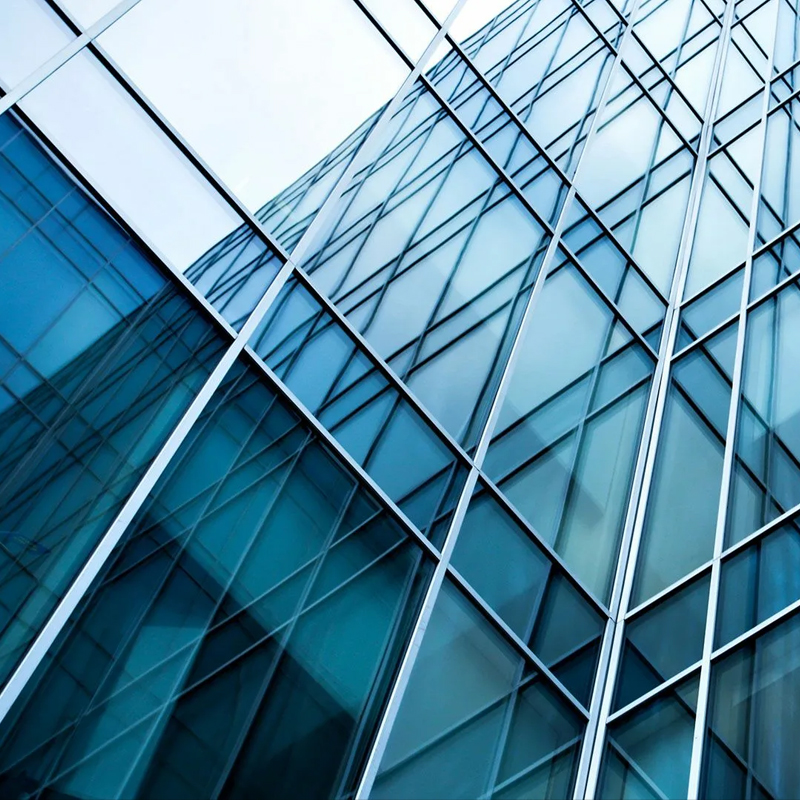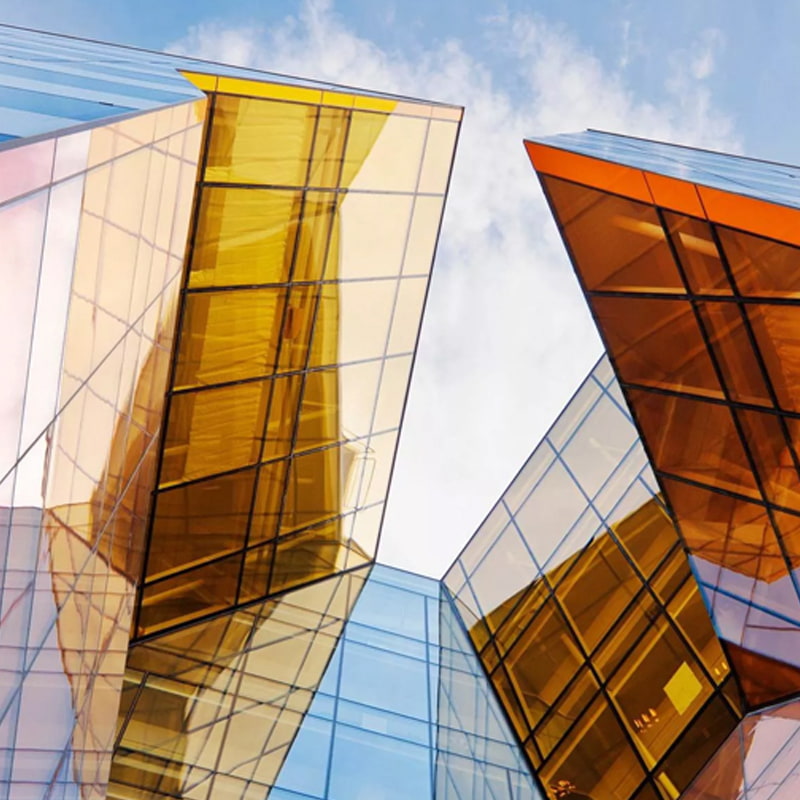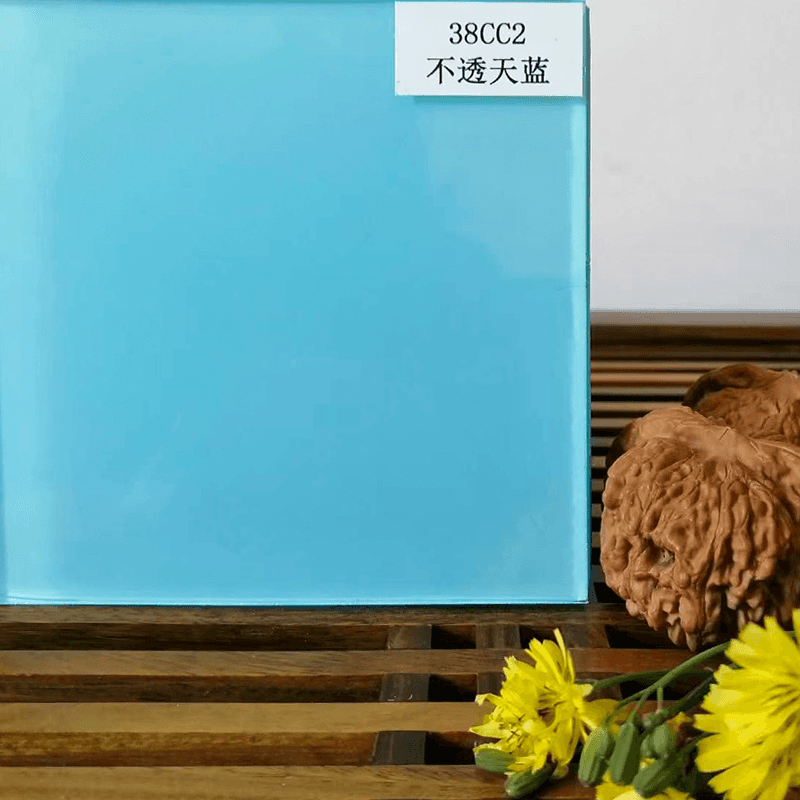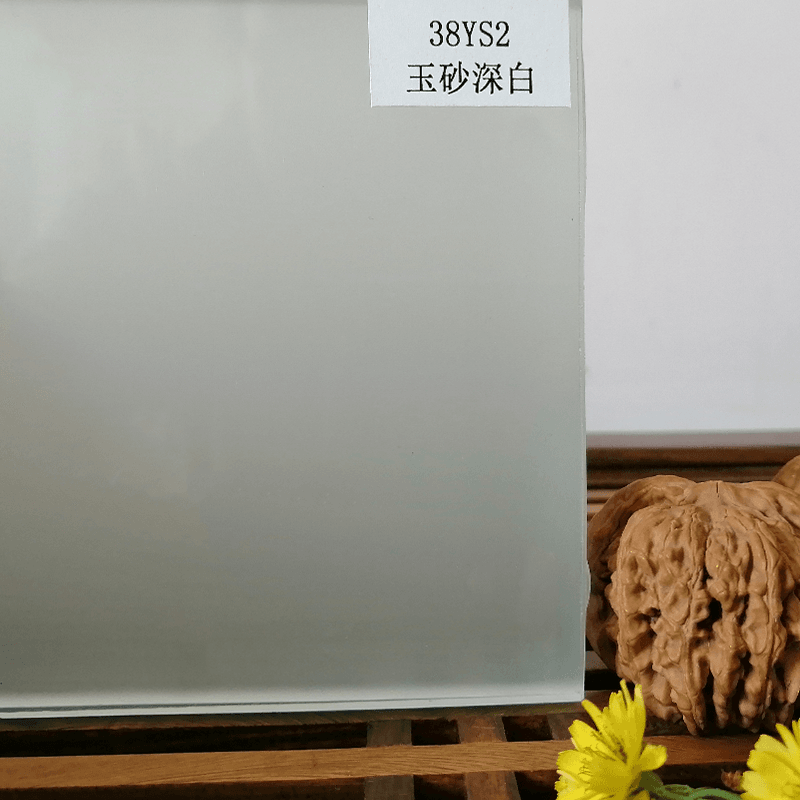language
In today's pursuit of a healthy lifestyle and a safe environment, UV protection has become a focus in many fields. Whether it's car windshields, building curtain walls, or photovoltaic module interlayers, PVB (polyvinyl butyral) film is ubiquitous. This raises a key question: Does PVB film truly block UV rays?
1. Understanding UV: An Invisible Threat to Health and Materials
Before discussing PVB, it's important to understand the "enemy" we're trying to block—ultraviolet (UV) rays.
UV Classifications:
UV-A (315-400 nm): Has the strongest penetrating power and can penetrate deep into the dermis, causing tanning and aging (photoaging). Long-term accumulation increases the risk of skin cancer. UV-B (280-315 nm): Has higher energy and primarily affects the epidermis, causing sunburn and redness. It is a major cause of skin cancer. Most UV rays are blocked by ordinary glass.
UV-C (100-280 nm): Has the highest energy and poses the greatest threat to living things. Fortunately, however, it is almost completely absorbed by Earth's ozone layer, and very little reaches the Earth's surface.
Damages of UV radiation:
To humans: Skin cancer, sunburn, photoaging, cataracts, pterygium, and other eye problems.
To materials: Causes fading, yellowing, embrittlement, and loss of gloss and strength (photodegradation) in plastics, rubber, textiles, wood, paints, dyes, and artwork.
Therefore, effectively blocking UV rays, especially the highly penetrating UV-A, is crucial for protecting human health and extending the life of materials.
2. PVB Film: The Core Material of the Lamination Process
PVB film is not just any ordinary plastic film; it plays an irreplaceable role in safety glass manufacturing.
Basic Properties:
High transparency and optical clarity: Essential requirements for glass interlayers.
Excellent adhesion: Securely bonds to the glass surface.
High toughness and elasticity: Imparts impact and penetration resistance to laminated glass. When glass breaks, the PVB holds the fragments together, preventing them from flying and injuring people (a core function of safety glass).
Excellent acoustic properties: Effectively reduces noise (soundproof PVB).
Moderate thermal insulation: Especially when tinted or with special interlayers.
Core Applications:
Automotive: Windshields (found in almost all modern cars), side windows, and sunroofs.
Construction: Curtain walls, skylights, doors and windows, railings, bulletproof glass, and explosion-proof glass.
Photovoltaic Industry: As one of the encapsulation films for crystalline silicon solar cell modules (although EVA is more commonly used, PVB also has applications, particularly in certain BIPV applications).
Other Applications: Display cabinets, furniture, riot shields, etc.
3. Core Question: Does PVB film block UV rays?
The answer is yes. Standard PVB film inherently has some UV blocking capabilities, and this performance can be significantly enhanced through formulation optimization.
Natural UV Absorption Properties of PVB Film:
Certain chemical bonds within the PVB resin molecular structure (such as C=O bonds) naturally absorb specific wavelengths of UV light.
This inherent property enables ordinary, untreated, transparent PVB film to effectively block most (typically over 99%) UV-B rays.
Regarding UV-A rays, ordinary transparent PVB also provides some blocking (typically over 60%-90%), but its effectiveness is not as thorough as for UV-B. UV-A rays are more penetrating and more difficult to block.
Enhanced UV-Blocking PVB Film:
To meet higher standards of UV protection (especially when near-complete UV-A blocking is required to protect sensitive items or skin), PVB film manufacturers have developed specialty films with added UVA absorbers.
How it works: These specialized chemical additives (usually benzotriazole or triazine compounds) are uniformly blended into PVB resin. They efficiently absorb specific wavelengths of UV light (particularly UV-A) and dissipate it as harmless heat.
Significant improvement: PVB film containing high-efficiency UV absorbers can increase both UV-A and UV-B rejection to over 99% (typically >99.5% or even >99.9%), virtually completely blocking harmful UV rays. This is now standard in high-end automotive windshields and museum-quality architectural glass.
4. Key UV Blocking Data and Comparison of PVB Film
Ordinary Transparent PVB Film:
UV-B Blocking Rate: >99%
UV-A Blocking Rate: Typically in the 60% to 90%+ range (specific values vary depending on brand, formulation, and thickness).
PVB Film with Ultraviolet Absorbers (UVA):
UV-B Blocking Rate: >99.5% (typically >99.9%)
UV-A Blocking Rate: >99% (typically >99.5% or higher, aiming for as close to 100% as possible).
Comparison with Ordinary Glass:
Ordinary float glass: Blocks nearly 100% of UV-B rays, but its UV-A blocking rate is lower, at only approximately 25%-40%. This is why items can still noticeably fade and skin can tan even in sunny rooms.
Overall Laminated Glass Performance:
The ultimate UV-blocking performance of laminated glass is determined by the outermost glass layer, the PVB interlayer film, and the innermost glass layer (if a multi-layer laminate). Because the glass itself completely blocks UV-B rays, the UV-B blocking rate of laminated glass is always close to 100%.
For UV-A blocking, the PVB film (especially those containing UVA agents) is the decisive factor. High-performance PVB laminated glass can achieve a UV-A blocking rate of over 99%.
5. Why is the UV blocking capability of PVB film so important?
Automotive:
Driver and passenger health protection: Effectively blocks UV-A and UV-B rays, significantly reducing the risk of skin cancer (especially on the left arm and face) and eye diseases (such as cataracts) for drivers and passengers from prolonged sun exposure. PVB windshields containing UVA agents are a health standard.
Interior protection: Prevents plastics, leather, and fabrics such as dashboards, seats, and door panels from fading, hardening, cracking, and aging due to UV exposure, extending the lifespan and aesthetics of interiors.
Architectural:
Indoor property protection (museums, art galleries, libraries, residences, and commercial spaces): This is one of the most important applications of UVA-treated PVB. Its near-complete UV blocking minimizes fading, yellowing, and aging on valuable artwork, antique furniture, books, archives, carpets, curtains, flooring, and paint and fabrics on furniture surfaces, thereby protecting cultural heritage and the value of home furnishings.
Human Health and Comfort: Reduces UV radiation entering indoor spaces, lowering the risk of long-term exposure and improving indoor environmental health. It also reduces glare and some heat (combined with thermal insulation).
Safety and Protection: PVB's core safety feature (protection against flying debris) is seamlessly integrated with UV protection.
Photovoltaic (as an encapsulation material):
Protecting Cells and Module Materials: Although photovoltaic modules utilize visible light to generate electricity, high-intensity UV rays can accelerate the aging and yellowing of the EVA (or PVB) encapsulation material on the cell surface, affecting light transmittance and power generation efficiency, and may even cause cell performance degradation. PVB with a certain degree of UV blocking capability (or PVB containing a UVA agent) helps protect internal materials, extending module life and reliability.

6. How to identify and select PVB laminated glass with UV protection?
Check the technical specifications:
Ask the glass processing factory or PVB supplier for a UV transmittance spectrum or specific data on UV-A and UV-B rejection. Specifically inquire whether PVB film containing UV absorbers is used.
Pay attention to the UV transmittance (T(UV)) indicator; the lower the better. High-performance products typically require a T(UV) < 1% (i.e., a rejection rate >99%) or even lower.
Understand certifications and standards:
Some industries have relevant standards. For example, automotive glass often has strict UV protection requirements. For architectural glass, refer to international or domestic standards for "anti-fade glass" or "museum-quality glass" (such as ISO 9050 and EN 410, which include relevant optical parameter measurements).
Inquire whether the product has passed relevant tests (such as ISO 21348, which measures the spectrum of solar UV radiation).
Don't judge solely by color:
Transparent PVB (whether or not it contains UVA agents) is inherently colorless or very lightly colored. Tinted PVB (gray, green, blue, etc.) primarily blocks sunlight and absorbs heat, and its UV-blocking ability depends primarily on whether UV absorbers are added. Darker glass or PVB may block more visible light and some heat, but this doesn't necessarily mean it blocks significantly more UV-A. Transparent PVB containing UVA agents generally blocks UV-A better than darker PVB without UVA agents.
Consult a Professional:
For applications requiring high UV protection (such as museums, art collections, and health-conscious homes/automobiles), be sure to consult a professional glass processor, architect, or PVB supplier to clarify your needs. Choose PVB film and laminated glass products that clearly indicate the presence of highly effective UV absorbers and provide high UV-A blocking data (e.g., >99.5% UV-A blocking).
7. Advantages and Limitations of PVB Film in Blocking UV
Advantages:
Integration with Safety Features: Provides both excellent safety features (impact resistance and splash resistance) and UV protection, achieving two goals at once.
High Efficiency (Contains UVA Agent): PVB with special additives can achieve near-100% UV-A and UV-B blocking, making it one of the most effective UV protection options for glass.
Durability: High-quality UV absorbers are highly stable in PVB film, providing long-term protection (often equivalent to the life of the glass).
No Impact on Visible Light Transmission (Transparent): Transparent PVB with UVA agent achieves near-complete UV blocking while maintaining high visible light transmittance (VLT), ensuring clear indoor lighting and vision.
Limitations:
Cost: PVB film with high-efficiency UV absorbers is more expensive than standard transparent PVB.
Reliance on the Overall Glass Structure: The protective effect of PVB requires the use of laminated glass, which is inseparable from the glass substrate. A single layer of PVB film alone does not have the practical strength.
Limitations of Ordinary PVB: Ordinary transparent PVB without added UVA agents does not block UV-A rays thoroughly enough and cannot meet the highest protection requirements.
Dependent Solutions: For non-glass applications, PVB film alone cannot be used as a direct UV protection layer.
8. Common Misconceptions Clarified
Myth: All PVB films block 100% UV.
Clarification: Ordinary transparent PVB effectively blocks UV-B (>99%), but its UV-A blocking is incomplete (60-90%+). Only specialized PVB films specifically formulated with high-efficiency UV absorbers can achieve near-100% UV-A blocking.
Myth: Dark-colored glass/PVB blocks UV better than light-colored/transparent film.
Clarification: Color depth primarily affects visible light and infrared (heat). The key to UV blocking effectiveness lies in whether the material itself contains UV absorbers. Transparent PVB with UVA absorbers generally blocks UV-A better than dark-colored PVB/glass without UVA absorbers.
Myth: If you have automotive or architectural film, you no longer need the UV protection of PVB.
Clarification: This is a complementary relationship, not a replacement. High-quality window film does provide excellent UV protection (>99%). However, PVB is the "core" of laminated glass, and its inherent UV-blocking properties (especially when containing UVA agents) provide the glass's foundational protective layer. Even if the film ages or becomes damaged, the underlying PVB protection remains. The combination of the two provides more reliable and long-lasting protection.
Myth: UV protection completely blocks sunlight, darkening the room.
Clarification: Clear PVB laminated glass containing UVA agents almost completely blocks UV rays (<380nm) while allowing the majority of visible light (380-780nm) to pass through, minimizing the impact on natural lighting in the room. Choosing a high-transmittance product can achieve a VLT exceeding 70%.
9. Conclusion
PVB film is much more than just an adhesive for glass. It naturally blocks most UV rays, particularly UV-B. More importantly, by adding highly effective UVA absorbers, modern specialty PVB films can achieve near-complete (>99%) blocking of harmful UV-A and UV-B rays.
Thus, in response to the title question, "Does PVB film block UV rays?", we can offer a clear and layered answer:
Yes, all PVB films offer significant UV protection, with particularly high UV-B protection (>99%).
Yes, PVB films containing specialized UV absorbers offer exceptional comprehensive UV protection, with UV-A and UV-B blocking rates exceeding 99%, effectively protecting both human health and interior objects.
When selecting laminated glass products, especially for automotive, museum, art gallery, library, high-end residential, commercial, and other applications requiring high UV protection, it's important to check whether the PVB film contains UV absorbers and request specific UV transmittance or UV blocking data. Choosing high-performance UVA-containing PVB laminated glass is a wise choice that takes into account safety, health, aesthetics and property protection.






